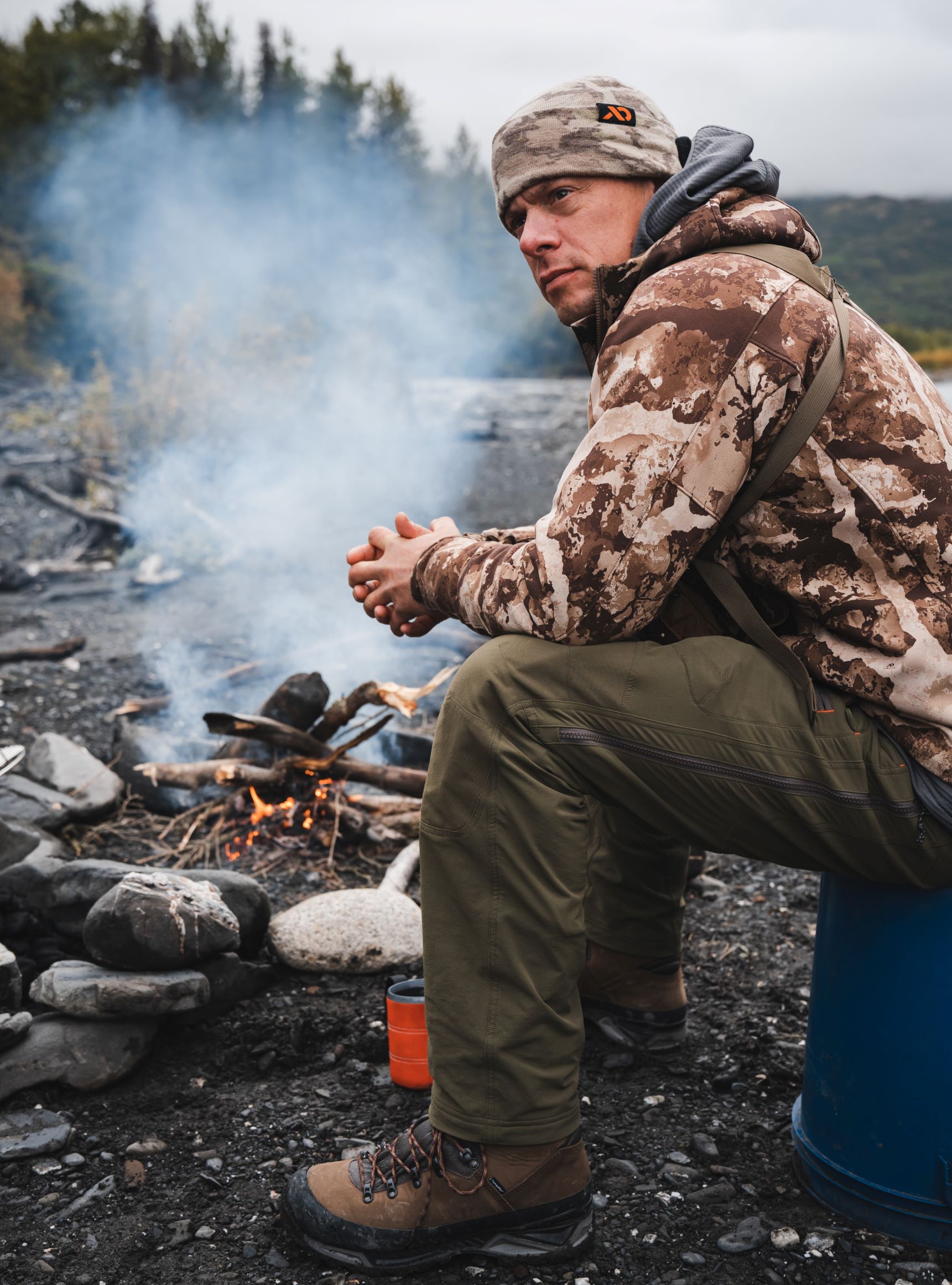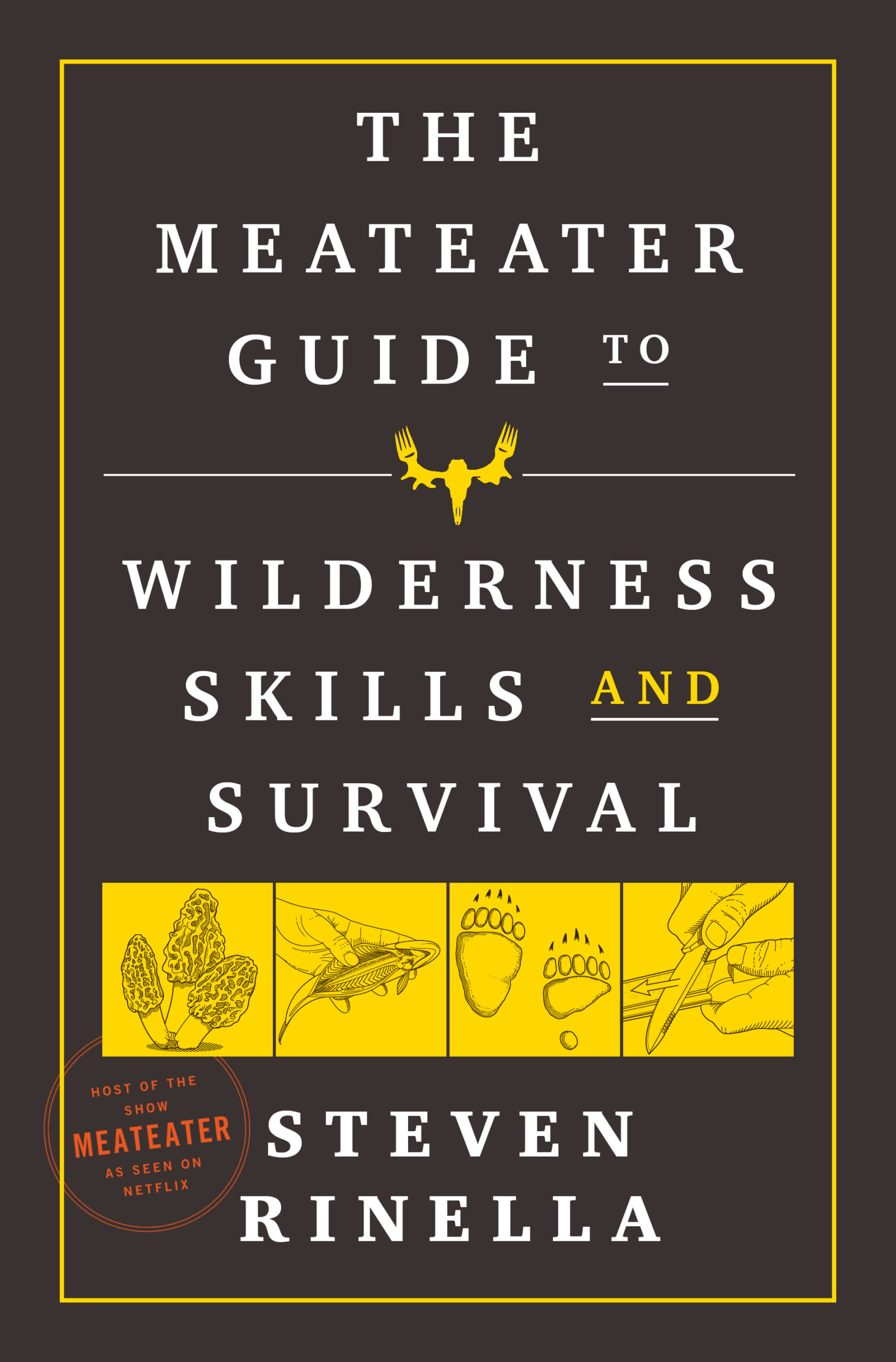5 Wilderness Survival Tips Every Guy Should Know, According to ‘MeatEater’ Star Steven Rinella
The TV host, hunter and author reveals expert tips for extreme outdoor situations.

Spend enough time outside and you’re virtually guaranteed
to find yourself in a tough spot. It could be a situation that threatens to derail your plans, or it could be one that derails your life. Believe me, I have lived through many, from getting lost to hypothermia to grizzly charges.
At the risk of alienating
doomsday preppers who fantasize about the zombie apocalypse, the greatest survival challenge you might encounter is the person staring back at you in the mirror. More often than not, it’s the dumbass mistakes that are the ones that get us into trouble. That’s why I wrote a book
chronicling them, so you don’t do the same thing.

Leave Your Wedding Ring at Home
If you devotedly wear your metal wedding band while hunting
and fishing, you could be risking a backwoods emergency and an amputated finger. Should your ring catch on a rock, fence, a piece of equipment, or a broken branch during a jump, trip, or stumble, a finger avulsion, also known as a “degloving,” could be the
result. In layman’s terms, an avulsion results in all of the skin and some of the flesh being rapidly and violently stripped off your finger.
It’s hard not to question the intelligence of anyone risking a finger to their metal ring. Consider instead a silicone
ring, a four pack of which you can get for the whopping cost of $23. As a side benefit, silicone rings don’t clack on your gun or bow when you’re trying to be stealthy. If you don’t heed our advice, at least don’t be extra stupid by wearing a ring made from tungsten carbide. These can’t be cut off by medical equipment; instead, they need to be cracked off with a big pair of pliers. Imagine going through that while your ring finger painfully swells due to a broken bone.
Never, EVER Drink Your Own Urine
Popular survival stories often focus on the shocking
and extreme measures people take to stave off death, and drinking urine to avoid dying of thirst is a popular entrant in the genre. Reality television star Bear Grylls has repeatedly filmed himself drinking piss. Although it’s an understandable response to
extreme thirst, tapping your own faucet is a bad idea. Urine is 95 percent water and 5 percent sodium, chloride, potassium, urea, and other waste products.
Although that sounds like a promising ratio, consider that seawater is 96.5 percent water and 3.5 percent
sodium and chloride. Just like drinking seawater, drinking urine will only dehydrate you further. And in consuming urine, you’ll also be taking in all the undesirable stuff that your kidneys just filtered out of your body. Repeat this process a few times over,
and your urine will be so highly concentrated with dangerous toxins that it could cause kidney failure. That means death. The bottom line is that a human can go about three days without water, and drinking urine won’t extend that timeline.
https://www.instagram.com/p/BtRKInQBvUF
Moss on Trees Doesn’t Tell You Anything
One of the oldest adages in survival lore is that moss always grows on the north side of trees, and that its orientation can be used as navigational aid. The truth is that moss doesn’t give a damn about compass directions. Moss growth on a tree trunk, rock, or even an old log cabin is dependent on two things:
moisture and shade. If you consistently find moss facing one direction on trees where all sides have similar conditions, then it’s likely because that area is out of the sun at midday most of the time. In the Northern Hemisphere, the north side of trees
tend to be shadier, but moss can grow wherever favorable conditions exist.
If the base of a tree has a creek on one side and dry ground on the other, moss is more likely to thrive on the creek side. If there’s a sodden overhanging branch that drips down
to the trunk, moss is more likely to grow there. By all means, pay attention to where moss tends to grow more often when you’re roaming around in the woods. It’ll help you build a better understanding of that landscape. But don’t count on it as a reliable
navigation tool. The sun and the stars—or better yet, your compass—are way more reliable.
The Deadliest Outdoor Critter Isn’t What You Think
Here’s a stark piece of data that should have you quivering
in your boots: mosquitoes kill nearly three-quarters of a million people annually worldwide, compared to an average of five fatal grizzly bear attacks per year. Far and away, that makes them the most dangerous creature in the world. The majority of the fatalities
they cause are directly related to various forms of the tropical disease malaria. The best protection against mosquitoes is to cover all exposed skin with layers of clothing that mosquitoes can’t bite through.
A thin nylon rain jacket, for example, offers much better protection than a light cotton hoodie, which a mosquito can easily poke holes in with its long, piercing stylets. If you know you’ll be spending time in a spot where the mosquitoes will be thick, bring lightweight, loose-fitting gloves and a mesh head net that covers your head, face, and neck. In really nasty situations, a mesh mosquito jacket and pants can be a lifesaver. You’ll also want to use some form of mosquito repellent.
https://www.instagram.com/p/CCYscdShULG
If You Don’t Know Exactly What It Is, Don’t Eat It
The good news is that if you are traveling in the wilds, you will almost certainly encounter some windfall of excellent food in the form of nuts, fruits, roots, mushrooms, or leafy vegetables. But there’s a catch: you’ll have to be able to recognize these as foods when you see them. You won’t have the time to learn
this in an emergency, so study plants ahead of time and follow four basic foraging rules to stay safe: Don’t guess, ever. If you don’t know, don’t eat it.
There are no shortcuts—you either recognize what plant it is, or you don’t eat it. Plant poisonings are rarely the result of mistaken identity: most occur when people eat random plants without having made any attempt to identify them. Once you’ve identified a particular food, don’t overeat it. You might be tempted if you are lost, scared, and hungry, but
be rational. Wild onions are edible, but eating a pound of raw onions will make you sick. You should be more cautious about overeating acidic fruits than sweet ones. Let your tummy tell you when to stop. Just because it’s the right plant or mushroom doesn’t make it food. You need the right part, too. Apple pies are not made from apple twigs and seeds. Your subsistence will not benefit from tough leaves or stems, rotten fungi, or unripe fruit.

Adapted from “The MeatEater Guide to Wilderness Skills and Survival“ (Random House) to be published on December 1, 2020.
